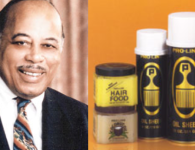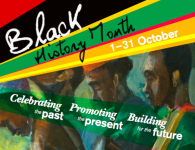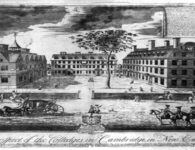Last Friday, at a pool party in McKinney, Texas, a large group of mostly black teenagers had a run-in with the police. An argument started when a white woman at the pool yelled at the party-goers to “Go back to Section 8 housing”, among other racially charged comments. When several of the party-goers, both black and white, objected to the older woman’s language, the woman slapped Tatiyana Rhodes, a black teenager, in the face. Police arrived some time later, and an officer cursed at several groups of people, telling some to leave, and wrestled one girl to the ground. When bystanders moved forward seemingly to assist the girl, officer Eric Casebolt drew his weapon and threatened the unarmed teenager bystanders, causing many to flee the scene. A video of the incident can be seen here.
The incident is the newest publicized case in the latest incidents of excessive police force and misconduct. Viewing the incident in context requires a look back into the racialized history of swimming pools in neighborhoods. This is not the first time a predominately white neighborhood has expressed its discomfort with too many black visitors. During the late 19th and early 2oth century, many U.S. cities, primarily in the North, began building swimming pools in many working-class or poor white and immigrant neighborhoods. Most were not built in predominately black areas. During the 1920s, a huge increase in pools arose, as swimming in pools being seen as a leisure activity. At the same time pools were increasingly being built, cities began to racially segregate them throughout the country. African Americans were not allowed to share the large, outdoor pools open to whites. At the time the racist notion that blacks were somehow dirty and less hygienic than whites was commonly thought, used as reasoning for keeping blacks out of white pools. The threat of black men having access to white women in such a space also drove pool-goers to extreme measures of keeping blacks out. Official ordinances were only one way to segregate, violence and intimidation of African Americans out of the pool area was common.
As the United States began its attempts to desegregate and white flight arose in the 50s, whites turned to private club pools or residential pools to legally continue their separation from the threat of blackness. In the past 50 years, the amount of private pools has increased from approximately 2,500 to over 4 million. Public pools have become abandoned and neglected, and today they continue to close at a steady rate. African Americans in especially the inner city have little access to pools, as they are not a public priority as they were in the 20s and 30s. Adding historical context to modern day conversations about race and other issues allows us to better inform ourselves about the ways in which black bodies have been and continue to be policed.
Source: http://www.theatlantic.com/politics/archive/2015/06/troubled-waters-in-mckinney-texas/395150/
http://www.npr.org/templates/story/story.php?storyId=90213675





















1 Comment
I grew up in the world of difference between the two major races Black/anyone other than whites I like the color pinky as in piggy, (smiling).I witnessed the citizens of our community and the other side, the environment wasn’t as bad as other parts of the country but definitely there…….terrible at times and sickening what I can see now was to me at my early age a local thing. But I’ve never FOR GOTTA NO RESISTANCE WILL I EVER….